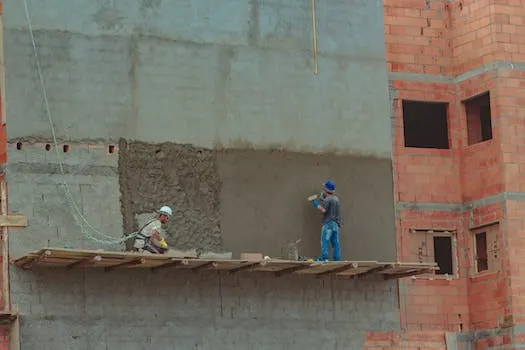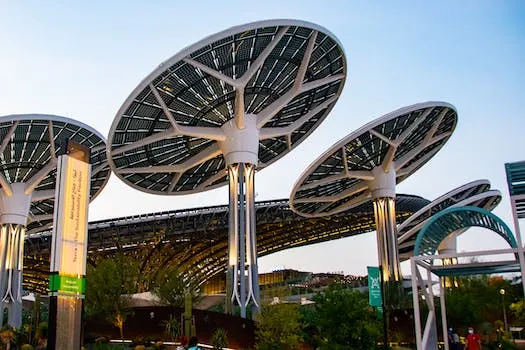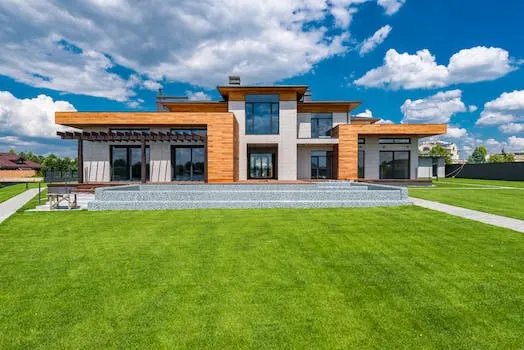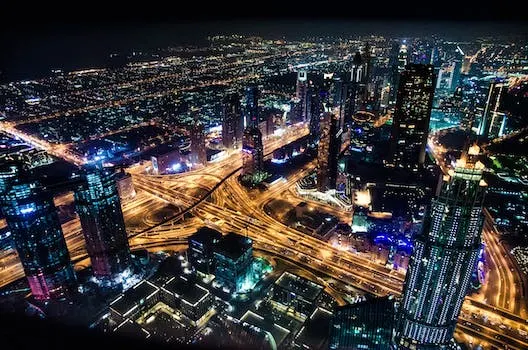
The Eco-Friendly Concrete Revolution: How Bacteria Could Help Reduce Carbon Emissions
The production of cement is one of the world's biggest industries, and it comes with a huge environmental cost. cement production accounts for nearly eight percent of global carbon emissions, making it one of the largest contributors to climate change. In an effort to reduce this impact, scientists have been exploring ways to produce cement without releasing carbon dioxide into the atmosphere. Now, researchers at MIT have discovered a way to eliminate carbon emissions from cement production altogether.
The process involves adding bacteria to concrete mixtures in order to create a more eco-friendly product. This method releases nearly no carbon emissions and could be an effective short-term strategy for reducing concrete's carbon footprint. The bacteria helps bind together materials like fly ash from coal plants and slag from steel mills that would otherwise be discarded as waste products. By using these materials instead of traditional cement, we can drastically reduce our environmental impact while still producing strong and durable structures.
The potential benefits are immense: not only would this method help us build a greener future by reducing our reliance on traditional cement production methods, but it could also help us save money in the long run by utilizing materials that would otherwise go unused or be thrown away as waste products. With further research and development, this innovative approach could revolutionize how we construct buildings around the world while significantly reducing our overall environmental impact in the process.
What is Concrete, and Why is it Harmful?
Concrete is a widely used building material, accounting for over 6 billion tons of CO2 emissions annually. This makes it one of the leading causes of global warming and climate change. Concrete is made up of several different materials, including cement, water, sand and gravel, chemical additives and entrained air. The production process involves heating calcium carbonate (limestone) to extremely high temperatures which releases CO2 into the atmosphere. Concrete typically consists of 41% crushed rock, 26% sand, 16% water, 11% portland cement and 6% entrained air when combined with a fluid cement paste that hardens over time to form a composite material. This makes concrete an incredibly versatile material used in almost every form of construction from roads to buildings to bridges. Unfortunately its production process also contributes significantly to global warming due to its high levels of CO2 emissions making it an unsustainable resource in the long term.
The Potential of Bacteria in Concrete Mixtures
The potential of bacteria in concrete mixtures is being explored by a team of researchers from the University of Colorado Boulder. The team has discovered that adding a genetically-modified organism (GMO) called Bacillus subtilis to concrete mixtures could reduce CO2 emissions by up to 60 percent. This is because the bacteria produces carbonic anhydrase, an enzyme that helps convert calcium carbonate into calcium oxide—the main ingredient in cement. This process requires much less energy than traditional cement production, resulting in fewer emissions.
The research team at CU Boulder is also developing new types of living building materials that incorporate bacteria and can absorb carbon dioxide from the atmosphere. These materials are based on natural antifreeze proteins which minimize freeze-thaw damage and increase durability. Furthermore, they are using this approach to design more sustainable buildings with help from some of the tiniest contractors: bacteria!
The “Extremely Durable concrete” project seeks to displace hydrogen production by replacing it with a strain of bacteria that creates a concrete-like material when combined with sand and nutrients. This would have a dramatic impact on reducing CO2 emissions as it would require much less energy than traditional cement production methods, resulting in fewer emissions overall.
In conclusion, CU Boulder researchers have made great strides towards creating eco-friendly building materials through their innovative use of bacteria in concrete mixtures. By utilizing this technology, we can reduce our reliance on hydrogen production for cement production and significantly reduce our carbon footprint while still maintaining durable structures for years to come!
The Benefits of Eco-Friendly Concrete
The use of eco-friendly concrete is revolutionizing the construction industry, offering a way to reduce carbon emissions and create more durable and resilient structures. The process requires less energy, which means lower costs for companies, leading to more affordable housing and other structures. Bacteria are used in concrete mixtures to produce calcium silicate hydrate—a byproduct that helps cement stick to aggregate particles—making the concrete stronger. This could help reduce the amount of cement used in any given mix, as it is by far the most carbon-intensive component of concrete production. Additionally, bacteria can be used instead of enzymes to produce cement without releasing carbon dioxide into the atmosphere.
The self-healing properties of eco-friendly concrete also extend its lifetime and reduce its impact on the environment when rebuilding or replacing structures. This could lead to significant savings in terms of materials and labor costs for companies involved in construction projects. Furthermore, biocementation processes can be used to create stronger soil which reduces earthworks and materials like gravel or sand needed for construction projects.
Innovations towards reducing carbon emissions from construction are becoming increasingly important as sustainability becomes a priority across industries worldwide. By using eco-friendly alternatives such as bacteria instead of traditional methods like enzymes, companies can significantly reduce their environmental footprint while still creating strong and durable structures that will last for years with minimal maintenance required. With these benefits combined with cost savings associated with reduced energy consumption during production processes, it's no wonder why eco-friendly concrete is quickly becoming an industry standard across many sectors today!
What’s Next for Eco-Friendly Concrete?
The University of Colorado Boulder is leading the way in eco-friendly concrete research. Their team is currently testing bacteria in real-world settings to ensure it’s safe and effective for use in construction. If successful, this could be a game-changer for the industry, reducing our carbon footprint and creating a greener future. The new material developed at CU Boulder incorporates bacteria that can absorb carbon dioxide from the atmosphere, offering an alternative to traditional concrete which releases carbon dioxide when produced. Additionally, researchers are exploring how bacteria can act as a self-healing agent in concrete by mending existing cracks. This could reduce maintenance costs and extend the life of buildings constructed with this new material. Furthermore, they are looking into ways to produce cement without releasing any carbon dioxide at all - something that would revolutionize the industry if achieved. With these advancements on the horizon, it's clear that eco-friendly concrete has a bright future ahead of it!
Conclusion
The research into eco-friendly concrete is still in its early stages, but the potential for a revolution in the construction industry is clear. The use of bacteria in concrete mixtures has the potential to reduce carbon emissions and create more durable and resilient structures. Ozinga laboratory tested a new low-carbon concrete mixture developed by researchers at the University of Illinois Urbana-Champaign, which could be a game changer for reducing our carbon footprint. Jonkers et al. investigated the potential of bacteria to act as self-healing agents in concrete, proving that they can mend existing cracks. Cement use and production accounts for about 8% of global CO2 emissions according to a 2019 study from the National Academy of Sciences, making it an important area to focus on when looking at ways to reduce our environmental impact.
The findings from this research are promising; if successful, eco-friendly concrete could be used worldwide with significant reductions in carbon dioxide emissions. This would not only help protect our environment but also create more durable and resilient structures that can withstand wear and tear over time without needing repairs or replacements as often as traditional materials do. Additionally, bacteria have been proven to act as self-healing agents in concrete which could further reduce maintenance costs associated with building projects while also helping protect against natural disasters such as earthquakes or floods that may cause damage over time.
The Eco-Friendly Concrete Revolution has already begun; Nov 23rd 2022 marks an important milestone with Fort Collins hosting their first ever low carbon cement plant opening ceremony - showing just how far we have come since research began into this revolutionary technology just a few years ago! With continued investment into researching eco-friendly solutions such as these, we can make great strides towards reducing global CO2 emissions by 4 billion tonnes each year - something that will benefit us all now and well into the future!








